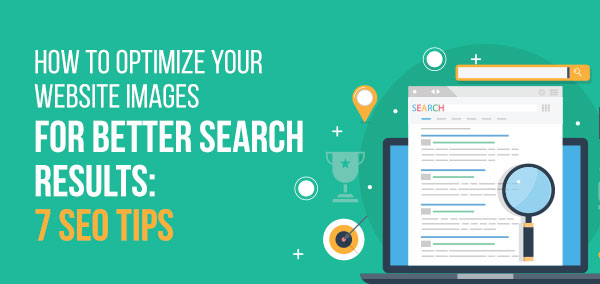How to optimize your website images for better search results: 7 SEO tips

Search engine optimization without really understanding how to optimize your images is likely to bring disappointing results. Conversely, image optimization, when combined with other search engine optimization (SEO) techniques, can deliver surprising results and take your website to the top of search engine results pages (SERPs).
Here are a few image optimization tips that work really well.
Tip 1: Pick the Right Image
First, prioritize user experience when selecting images. Images should clearly relate to the text on your website. They should be of good resolution and quality, and large enough to appear across devices.
Try to avoid boring stock images, instead, you may look for images in free image sources, including Google image search with usage rights, Flickr, Freeimages, Unsplash, and New Old Stock.
Tip 2: Include Keyword Optimized Image Name
Use keyword optimized image names related to your website that makes sense both to the browsers and search engine bots. It’s better to use hyphens (-) in between two words rather than underscores (_). For example: seo-tips-for-image-optimization.jpg. The usage of keywords in your image file name will improve your image ranking in search results.
Tip 3: Choose the Right Image Size & File Format
The loading time of your website shouldn’t exceed 3 seconds. It’s better to optimize your images without hurting quality by reducing its size.
After finalizing on the right image, name, and size, it’s prudent to choose the right format that suits your website. You may select from these three formats: GIF, PNG, or JPEG.
Tip 4: Add Appropriate Alt Text
Alternative text (Alt text) is a text that appears in place of the image if the browser cannot render the image. It is also the text that appears when you hover over the image.
Creating the right alt tag, associated with the keyword that best describes your image, helps in better ranking of your website.
Tip 5: Include the Right Thumbnail Pictures
Optimize the size of your thumbnail pictures to minimize page loading time. In this case, it’s okay to sacrifice image quality for improved speed. To resize image size, you can make use of Photoshop, PicMonkey, Pixlr, GIMP, or Fotor.
Tip 6: Don’t Miss the Image Sitemaps
Sitemaps provide information to crawlers that the page has to be crawled and indexed, so that it appears on the search engine result pages (SERPs).
If your website already has a sitemap, then make sure to include a separate sitemap for images as well. This will prioritize the indexing of your images and lead to higher ranking of your website.
Tip 7: Include Right Captions
Captions are one or two line descriptions about the image and the message it conveys. These do not directly help in SEO but helps the reader to understand the image better and stay on the page for a longer time.
This reduces the bounce rate and, in turn, improves your SEO.
To know more image optimization tips, Click Here.
